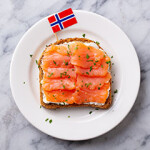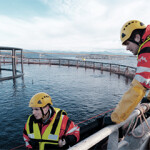Norway closes key border crossing with Russia; Russian fishing companies push for bunker fuel ban exemption

The primary gateway used by Russian cod and haddock exporters to access the European market has been closed by the Norwegian government.
The border crossing in the Norwegian town of Storskog has been closed because the physical infrastructure there is not adequate for completing customs checks, according to the Norwegian Food Safety Authority, which said on 11 October all entry of seafood products through Storskog will be suspended beginning Friday, 13 October.
“The checkpoint does not have the physical facilities required to conduct controls in accordance with the law and regulations,” Norwegian Food Safety Authority Head Cecilie Hansen told the Barents Observer.
Approximately two million kilograms of frozen cod and haddock have been shipped from the Russian port of Murmansk to countries in Europe’s Schengen Area through Storskog thus far in 2023.
Norwegian food safety authorities have looked at modernizing the immigration control, customs control, and veterinarian control facilities at the checkpoint since 2012, and Hansen said the closure was a temporary measure that will be reversed once improvements are made. She said the action was taken “to ensure safe import of goods and services, for people, nature, and animals.”
“It is a temporary suspension until the requirements in accordance with the regulations again are met,” she said. “We have to see if it is possible to upgrade the facilities to needed standards.”
Russian trawlers are still allowed to offload seafood in the northern Norwegian ports of Tromsø, Båtsfjord, and Kirkenes. In 2022, around EUR 175 million (USD 185 million) worth of Russian seafood was landed in those three ports, up 42 percent from 2021.
Customs facilities on the Russian side of the border near Storskog were updated in 2002 with Norwegian funding, but in 2014, Russia banned Norwegian seafood in response to Norway’s sanctions implemented in response to Russia’s annexation of Crimea.
In July 2023, Russia’s Ministry of Agriculture banned imports of value-added seafood products from nations that had implemented sanctions following its invasion of Ukraine, which included most of Europe. However, Russia is still permitted to export cod and haddock into the European Union, as they have not been placed on E.U. sanctions lists.
Russia implemented new duties on exports, including seafood, on 1 October, 2023. The Russian government implemented a ban on gasoline and diesel fuel exports on 21 September, 2023, to stabilize domestic fuel prices, but an amendment put forward by representatives of the country’s fishing industry would rescind the ban on bunker fuel, which is used by Russia’s fleet. The ban “could lead to disruptions in fishing,” according to the Fishery Shipowners Association (FSA).
The amendment was approved by the Russian Ministry of Agriculture and put into place immediately, according to Sfera.
Photo courtesy of WikiMedia Commons






Share